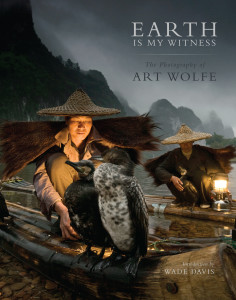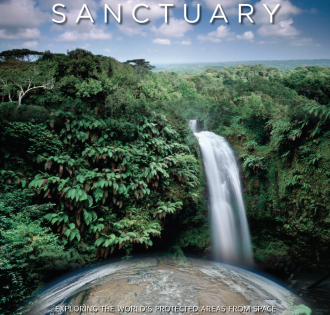El Arte de la Fotografía
The Art of the Photograph is now available in Spanish!
Published by Anaya Multimedia

The Art of the Photograph is now available in Spanish!
Published by Anaya Multimedia

No trip to east Africa is complete without a visit to the magnificent Ngorongoro Crater, Tanzania. It is the largest unfilled, inactive volcanic caldera in the world. Various hominids have lived here for 3 million years and currently about 25000 large mammals from rhinos to hippos to zebras make this area home.

Can one person really make a difference? Rachel Carson did – she wrote the book Silent Spring just over 50 years ago in 1962 which woke up the American public to the fact that we were killing off our wildlife at an alarming rate – with many on the brink of extinction. Despite the claims and disinformation of the chemicals companies she laid out the scientific proof that DDT was responsible for the decline in birds of prey. Her book and public awareness ultimately lead to the Endangered Species Act signed into law in 1973.
Each of the animals in this album would have been extinct by today had it not been for the Endangered Species Act turning their fate around.
American Alligator – nearly gone by the 1960s for their skins to produce purses and shoes, protected in 1967, they were removed from the list just 20 years later after a hearty come back.

Whooping Cranes – hunted for their feathers for fashion there were only 16 birds left in 1941. In 1967 under the act’s protection the few remaining birds were rounded up for captive breeding and today several hundred exist in the wild.

Bald Eagle – By 1963 there were just 417 breeding pairs in the lower 48 due to DDT, today there are over 10,000 and you no longer have to go to a zoo to see our nations symbol. Likewise Peregrine Falcons are doing well with many taking to the skyscrapers of large cities to raise the next generation while preying on pigeons.

Grizzly Bear – by the 1970s there were around 140 bears, mostly in Yellowstone National Park, when they were put under protection in 1973 – today there are some 1200-1400 in the lower 48 (still far from their original estimated 50,000 at the time of Lewis and Clark).

Grey Wolf – virtually extinct by the 1930s due to hunting, protected and reintroduced into Yellowstone in the 1970s there are an estimated 5,000 wolves in the lower 48 today.

Californian Condor – In 1987 the last 22 Condors were captured in the wild for captive breeding and today around 200 live in the wild. Alive, but still one of the rarest birds on the planet.


 Curious Animal is an online magazine for Adventure Travel, Photography, Music, Books, Big Issues and Ideas from around the world. Graeme Green interviewed me for a couple of pieces on Curious Animal. Apparently they had the pleasure of talking to many of the world’s best photographers, from Steve McCurry to Soren Solkaer, who spend their time traveling the world photographing everything from sharks to rock stars. I discussed disappearing cultures… Roger Ballen on the art of the strange… Chris Hadfield on photographing the Earth from space… Here are some of their thoughts on photography, the world and life itself.
Curious Animal is an online magazine for Adventure Travel, Photography, Music, Books, Big Issues and Ideas from around the world. Graeme Green interviewed me for a couple of pieces on Curious Animal. Apparently they had the pleasure of talking to many of the world’s best photographers, from Steve McCurry to Soren Solkaer, who spend their time traveling the world photographing everything from sharks to rock stars. I discussed disappearing cultures… Roger Ballen on the art of the strange… Chris Hadfield on photographing the Earth from space… Here are some of their thoughts on photography, the world and life itself.

Yellowstone National Park is spectacular in the winter. We stayed at the Old Faithful Snow Lodge, one of the few lodges open in the winter. From there we explored the Norris Geyser Basin via snowcoach, passed all the while by snowmobilers, who now are restricted to roads and use significantly quieter engines. As always the wildlife is varied and accessible, but what I liked photographing were the landscapes, especially the pine forests that burned back in the late 1980s. Their regimented geometry was softened by the falling snow.

Pantone’s color of the year is Marsala.
A naturally robust and earthy wine red, Marsala enriches our minds, bodies and souls. The impactful, full-bodied qualities of Marsala make for an elegant, grounded statement color when used on its own or as a strong accent to many other colors.

With the publication of Earth Is My Witness, 2014 was a highlight year in my career. So much energy and time was put toward this mega project that to see it finally in published form gives everyone at Art Wolfe, Inc. an enormous sense of accomplishment. Earth Is My Witness was launched at an event at the California Academy of Sciences.
 While my travel schedule slowed down somewhat, I did find myself in India twice—particularly in Ladakh, searching for the elusive snow leopard. I saw several, but at great distances. Regardless, it was a tremendous experience in a rugged and elemental landscape. Next up were Wyoming’s Yellowstone National Park, Alaska’s Glacier Bay and Katmai National Parks, and Norway’s Svalbard Archipelago. After teaching a couple workshops in Oregon and Washington, I headed off to Kenya, Ethiopia and Papua New Guinea to make a series of specials for Australian TV. In November I joined Denis Glennon and Frans Lanting in South Georgia Island and Antarctica. Then Iceland’s Bárðarbunga volcano beckoned and I answered its call. It’s been erupting since August and shows no sign of slowing down. My final trip of the year to East Africa straddled 2014-2015.
While my travel schedule slowed down somewhat, I did find myself in India twice—particularly in Ladakh, searching for the elusive snow leopard. I saw several, but at great distances. Regardless, it was a tremendous experience in a rugged and elemental landscape. Next up were Wyoming’s Yellowstone National Park, Alaska’s Glacier Bay and Katmai National Parks, and Norway’s Svalbard Archipelago. After teaching a couple workshops in Oregon and Washington, I headed off to Kenya, Ethiopia and Papua New Guinea to make a series of specials for Australian TV. In November I joined Denis Glennon and Frans Lanting in South Georgia Island and Antarctica. Then Iceland’s Bárðarbunga volcano beckoned and I answered its call. It’s been erupting since August and shows no sign of slowing down. My final trip of the year to East Africa straddled 2014-2015.
My prints were featured in the “Pristine Russia” traveling exhibit and “Power of the Image” exhibit in Beijing. I had two gallery openings this year: The Konica Minolta Gallery featured my work in January. My work is also hanging in the Smithsonian National Museum of Natural History as part of the Nature’s Best Photography Windland Smith Rice International Awards Exhibition.
On the awards front, Human Canvas was selected for the Graphis Photography Annual. Earth Is My Witness was named a “Best Photo Book of the Year” by American Photo magazine. I was honored be included in the UK magazine Professional Photography as part of their 100 Photography Heroes special issue.
Travels to the Edge continued to air around the world, including a first-time run in France as Voyages Au Bout Du Monde Avec Art Wolfe.
If you find yourself in Seattle, please do not hesitate to drop by my gallery. As always, please keep an eye on artwolfe.com for the latest updates. Wishing you and yours a bountiful New Year!
-Art Wolfe
Explore. Create. Inspire.

Nothing is more exciting than flying for 8 hours above herds of wildebeest and other critters of the Serengeti, above Lake Natron’s spectacular mineral deposits and lesser flamingos, and finally around the summit of “Ol Doinyo Lengai” volcano the Maasais call the home of the gods. The surface of Natron is surreal, colorful, and geometric, seemingly made for me. In some of the flamingo images you will see both reflections and shadows from the same birds resulting in beautifully complex compositions.
See the First and Second videos in the series of East Africa Video Journals.

 Efforts to conserve parks and protected areas around the world are being aided by Earth observations from space-based sensors operated by NASA and other space agencies as well as commercial providers. Sanctuary highlights how the view from space is being used to protect some of the world’s most interesting, changing, and threatened places.
Efforts to conserve parks and protected areas around the world are being aided by Earth observations from space-based sensors operated by NASA and other space agencies as well as commercial providers. Sanctuary highlights how the view from space is being used to protect some of the world’s most interesting, changing, and threatened places.
“Sanctuary: Exploring the World’s Protected Areas from Space,” published by the Institute for Global Environmental Strategies (Arlington, Virginia) with support from NASA, debuted at the 2014 World Parks Congress in Sydney, Australia. The once-a-decade meeting is sponsored by the International Union for Conservation of Nature, the world’s largest global environmental organization founded in 1948.
Download the PDF version.

While the Serengeti always offers its share of fine wildlife sightings, I was quite excited by seeing the 120,000 year old Engaresero Footprints. These are among the oldest modern human tracks in the world.
